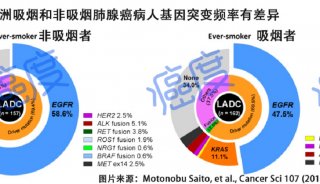ALK in cardiac myocytes

Heart formation is cued by a combination of positive and negative signals from surrounding tissues. Inhibitory signals that block heart formation in anterior paraxial mesoderm include Wnt family members expressed in dorsal neural tube and anti-BMPs expressed in the axial tissues (i.e., noggin in the notochord). Wnt signalling pathway, which is essential for setting up the entire body pattern during embryonic development involves glycogen synthase kinase-3 (GSK3). In the absence of Wnt signaling, GSK3 is active and phosphorylates b-catenin resulting in its degradation by ubiquitin-mediated proteolysis. Activation of Wnt signaling inhibits GSK3, thereby preventing phosphorylation of b-catenin, which is then able to move to the nucleus. There it associates with members of the LEF-1/TCF family of transcription factors, which activate the transcription of genes like cyclin-D1, myc, and MMPs. The Wnt signaling pathway is blocked by a family of secreted proteins such as crescent and Dkk-1 sufficient for induction of heart formation in posterior mesoderm. BMP signaling can also be blocked by the BMP antagonists noggin and chordin, which are secreted from the notochord and cooperate with Wnts to prevent cardiogenesis. Receptors for BMPs, members of the transforming growth factor-beta (TGFb) superfamily, are persistently expressed during cardiac development, yet mice lacking type II or type IA BMP receptors die at gastrulation and cannot be used to assess potential later roles in creation of the heart. Activin receptor-like kinase 3 (ALK3) is specifically required at mid-gestation for normal development of the trabeculae, compact myocardium, interventricular septum, and endocardial cushion. Cardiac muscle lacking ALK3 is specifically deficient in expressing TGFb2, an established paracrine mediator of cushion morphogenesis. In humans, congenital heart defects occur with a prevalence of at least 1% in newborns, and are even more common in death before term. Most frequent are defects in septation and the cardiac valves, and few single gene etiologies are known. The invariable defects in myocardium and AV cushion resulting from congenital deletion of ALK3 provide strong support for its assessment as a candidate gene in human congenital heart disease.
Contributor: Kosi Gramatikoff
REFERENCES: Frame S, Cohen P. GSK3 takes centre stage more than 20 years after its discovery. Biochem J. (2001) Oct 1;359(Pt 1):1-16. Review. Gaussin V, et al., Endocardial cushion and myocardial defects after cardiac myocyte-specific conditional deletion of the bone morphogenetic protein receptor ALK3. Proc Natl Acad Sci U S A. (2002) Mar 5;99(5):2878-83. Marvin MJ et al. Inhibition of Wnt activity induces heart formation from posterior mesoderm. Genes Dev. (2001) Feb 1;15(3):316-27. Schneider VA. And Mercola M. Wnt antagonism initiates cardiogenesis in Xenopus laevis. Genes Dev. (2001) Feb 1;15(3):304-15. Tzahor E. and Lassar AB. Wnt signals from the neural tube block ectopic cardiogenesis. Genes Dev. (2001) Feb 1;15(3):255-60.
-
科技前沿









